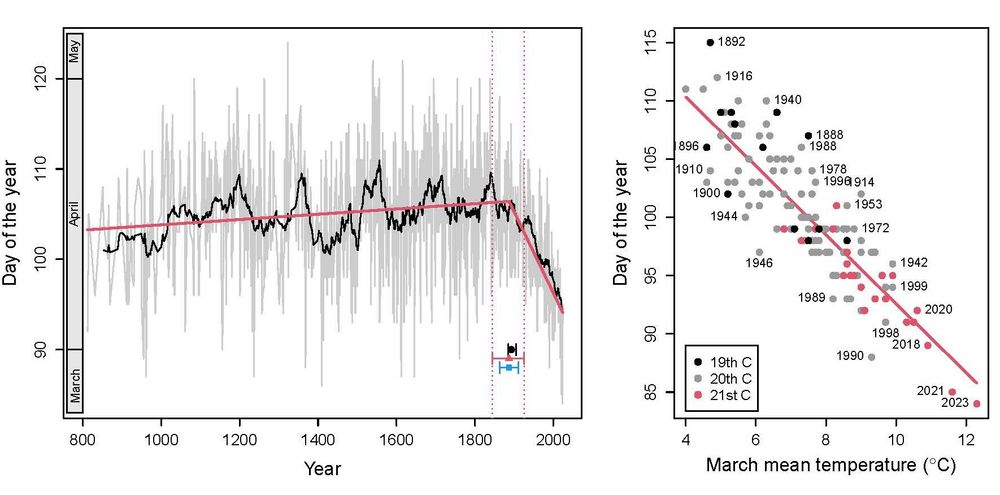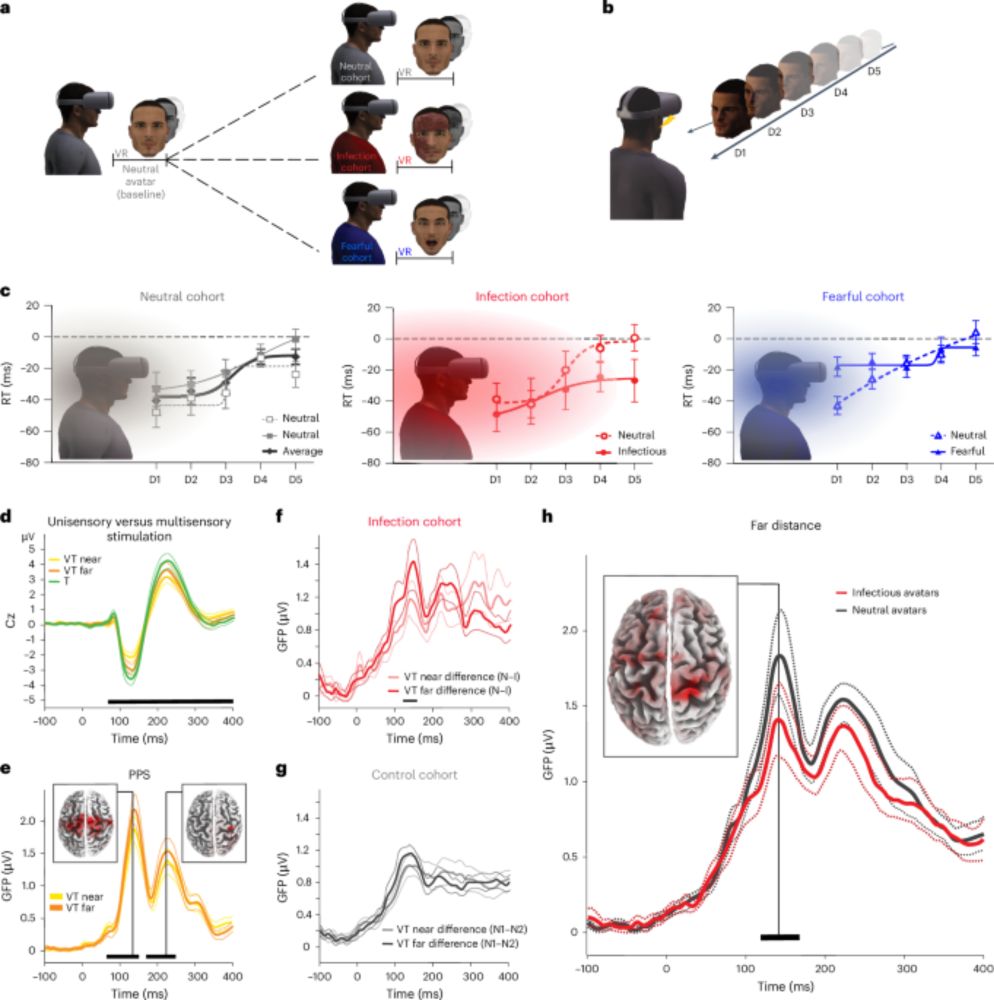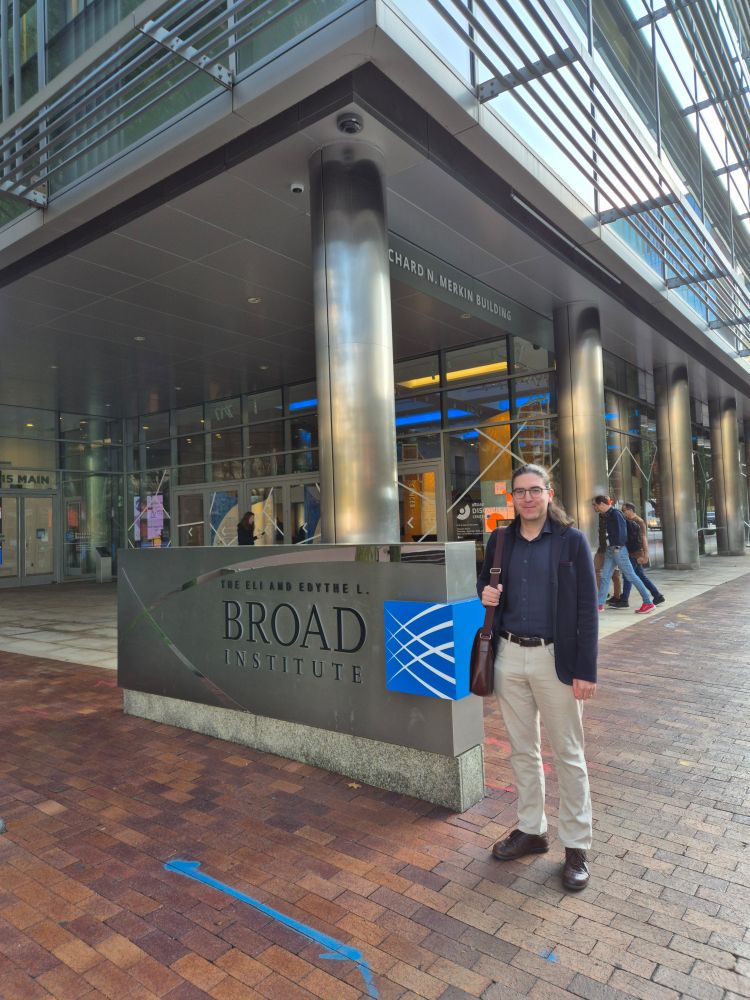
📣 I hereby make my Bluesky debut to announce that our work linking DNA binding affinities and kinetics 𝘪𝘯 𝘷𝘪𝘵𝘳𝘰 and 𝘪𝘯 𝘷𝘪𝘷𝘰 for the human transcription factor KLF1 just got published in Cell! @cp-cell.bsky.social
www.cell.com/cell/fulltex...
Key findings in a thread (1/6):
27.11.2025 13:17 — 👍 97 🔁 33 💬 3 📌 2
My first @umasschan.bsky.social/@impvienna.bsky.social affiliated paper is up!
tomtom-lite is a re-implementation of tomtom targeting the ML age of genomics. Fast annotations ("what is this motif?") and simple large-scale discovery of motifs.
Check it out!
academic.oup.com/bioinformati...
20.11.2025 14:02 — 👍 35 🔁 14 💬 1 📌 0
Submit a Claim
Hey authors! Check to see if Anthropic stole your book to train their slop generator on. You’re entitled to $1500 per stolen Work.
Look up your work, and if you’re in the database, file a claim
secure.anthropiccopyrightsettlement.com/lookup/
18.11.2025 07:39 — 👍 3068 🔁 2543 💬 78 📌 139

Today I was happy to present Corgi at the @broadinstitute.org Broad Institute at the ML in Drug Discovery Symposium.
If you want to use it for predicting genomic tracks, Corgi is now published on GitHub: github.com/ekinda/corgi
07.11.2025 23:36 — 👍 6 🔁 0 💬 0 📌 0

Three new research groups joining the MPIMG
We are excited to welcome @fueyoraquel.bsky.social, @sedonamurphy.bsky.social, and @jmstein.bsky.social as new group leaders at our institute!
Read more about their work:
--> www.molgen.mpg.de/2025-10-31-n...
All three are recruiting in the IMPRS PhD Call!
--> www.molgen.mpg.de/IMPRSPhDproj...
06.11.2025 16:00 — 👍 41 🔁 10 💬 0 📌 3

Last chance to turn it off.
On Monday, November 3rd, Microsoft will start using your LinkedIn data for AI training. And remember, you're opted in by default.
To toggle it off 👉 Account - Settings & Privacy > Data privacy > Data for Generative AI Improvement.
31.10.2025 13:37 — 👍 3869 🔁 3602 💬 87 📌 211
⚡⚡Excited to announce I'll be starting my lab at the Max Planck Institute of Molecular Genetics (@molgen.mpg.de) in Berlin in December! Leaving sunny California to join a fantastic environment with colleagues who do super cool work.
🔬🦠I'm hiring at all levels! 🔬🦠Check: www.molgen.mpg.de/fueyo-lab
06.10.2025 13:46 — 👍 86 🔁 26 💬 3 📌 2

We are excited to share GPN-Star, a cost-effective, biologically grounded genomic language modeling framework that achieves state-of-the-art performance across a wide range of variant effect prediction tasks relevant to human genetics.
www.biorxiv.org/content/10.1...
(1/n)
22.09.2025 05:29 — 👍 174 🔁 90 💬 4 📌 5
Just got my flu vaccine shot.
Don't forget yours this season!
04.09.2025 21:47 — 👍 3 🔁 0 💬 0 📌 0
Congratulations!! 🎉
04.09.2025 16:56 — 👍 1 🔁 0 💬 1 📌 0
🥳 Thrilled to share that our lab has been awarded an ERC StGrant for our project SigReg: Signal to Regeneration!
How can we unlock limb regeneration in adult mammals?
It’s time to apply what we learned from 🐸 ➡️ 🐭
Thank you @erc.europa.eu for supporting ambitious science!!!
04.09.2025 13:27 — 👍 97 🔁 10 💬 21 📌 1

Juliane Glaser receives an ERC Starting Grant – portrait of Juliane with text on the left.
New ERC Starting Grant for Juliane Glaser to study role of epigenetic mechanisms, specifically the control of transposable elements, in mammalian embryonic development.
Read all details here: www.ie-freiburg.mpg.de/6057908/2025...
Congratulations @julianeg.bsky.social
@erc.europa.eu #ERCStG
04.09.2025 10:43 — 👍 64 🔁 13 💬 3 📌 0
![4-panel Comic. (1) STUDENT: If the wavefunction only collapses when I observe it, does that mean my consciousness affects the universe? (2) [Bad:] PROFESSOR: Yes, quantum entanglement proves that we all have souls. (3) [Good:] PROFESSOR: No, consciousness plays no role here. It’s just physical measurement. (4) [Chaotic:] PROFESSOR: No. The wavefunction collapses when *I* look at it because I’m a full professor. It won’t collapse for an undergraduate.](https://cdn.bsky.app/img/feed_thumbnail/plain/did:plc:cz73r7iyiqn26upot4jtjdhk/bafkreic2mhmdvsftki6qe275hycolgt22msekbwzdyqoujt56qzpcbm3hm@jpeg)
4-panel Comic. (1) STUDENT: If the wavefunction only collapses when I observe it, does that mean my consciousness affects the universe? (2) [Bad:] PROFESSOR: Yes, quantum entanglement proves that we all have souls. (3) [Good:] PROFESSOR: No, consciousness plays no role here. It’s just physical measurement. (4) [Chaotic:] PROFESSOR: No. The wavefunction collapses when *I* look at it because I’m a full professor. It won’t collapse for an undergraduate.
Wavefunction Collapse
xkcd.com/3134/
28.08.2025 21:27 — 👍 3588 🔁 544 💬 43 📌 25
Update: Trans perturbations are very tricky. The model has some capability of this, but mostly the output is not very sensitive to single perturbations. In hindsight this isn't surprising to me.
28.08.2025 19:51 — 👍 1 🔁 0 💬 0 📌 0
New preprint alert!
Corgi imitates cellular gene regulation and integrates DNA sequence and trans-regulator information.
This allows Corgi to make accurate predictions in unseen cell types. Also, it can simulate trans-regulator perturbations in silico.
26.06.2025 07:46 — 👍 42 🔁 9 💬 3 📌 0
If you like transcription regulation and its mechanisms, this WIP list is for you.
I'm sure I've forgotten lots of people, so don't hesitate to let me know so I can add you to the list.
go.bsky.app/8vTgeXB
28.08.2025 12:52 — 👍 93 🔁 40 💬 46 📌 3
Thanks! :)
28.08.2025 19:47 — 👍 0 🔁 0 💬 0 📌 0
Amazing list, thank you! I'd like to be included as well. I work on deep learning models of human gene regulation.
28.08.2025 18:49 — 👍 1 🔁 0 💬 1 📌 0
I think it makes sense, in that genomic DNA that is not a promoter has, through evolution, committed to being not a promoter. So its distribution is shifted away from promoters. Random DNA shouldn't have such a shift.
28.08.2025 12:32 — 👍 6 🔁 0 💬 1 📌 0

Phenology changes for the Japanese cherry tree (Prunus jamasakura) in Kyoto. Left: Day of the year of the flowering peak for the period between 812 and 2024. Right: Relation between March mean air temperature (°C) in Kyoto and the day of the year of the Japanese cherry tree peak flowering for the period between 1890 and 2024.
https://jgpausas.blogs.uv.es/2025/06/11/134-years-of-climate-warming-effects/
Climate warming is not a recent phenomenon; it has had detectable impacts on plants for at least 134 years!
The onset of phenological plant response to climate warming @newphyt.bsky.social
nph.onlinelibrary.wiley.com/doi/10.1111/...
🧪🌎🌿🌐🌳 🍁 #PlantBiology @cideinvestiga.bsky.social @csic.es
11.06.2025 12:21 — 👍 145 🔁 68 💬 3 📌 9


Looking forward to spending the next couple of months at MIT, collaborating with @bergerlab.bsky.social on deep learning methods in computational biology!
21.08.2025 14:59 — 👍 10 🔁 0 💬 0 📌 0
Congrats!!
19.08.2025 02:17 — 👍 1 🔁 0 💬 0 📌 0
Assistant Professor at @scilifelab.se and @stockholm-uni.bsky.social. Intrigued by what makes life work at the molecular level.
Dad x 2, husband, son, brother, computational biologist, genome scientist, associate professor at la jolla institute for immunology (LJI) and UCSD https://www.lji.org/labs/ay/
EMBL's European Bioinformatics Institute (EMBL-EBI) provides open biological data resources and tools, and performs basic research in computational biology. https://www.ebi.ac.uk/
The European Molecular Biology Laboratory drives visionary basic research and technology development in the life sciences. www.embl.org
A Reviews journal from SpringerNature. Timely Review articles, Comments and Highlights of the latest research in molecular cell biology. https://www.nature.com/nrm/
Official account of the Max Planck Society. Devoted to basic #research in #physics #astronomy #chemistry #biology #earthsciences #materialscience #mathematics #socialsciences and the #humanities; Imprint: https://www.mpg.de/imprint
EMBO is the organization of more than 2,100 leading researchers that promotes excellence in life sciences in Europe and beyond.
https://www.embo.org/
PhD candidate in Aktas Lab @MPI for Molecular Genetics in Berlin. 🧬🔬
Passionate about Evolution and Molecular Biology.
A multidisciplinary community of researchers with the mission to better understand the roots of disease and narrow the gap between new biological insights and impact for patients. Broadinstitute.org
Group Leader at Max Planck Institute for Molecular Genetics
Studying genome organization with quantitative super-resolution microscopy
https://www.molgen.mpg.de/stein-lab
Group leader @mpi-mg, Berlin
Chromatin tracing, epigenetics, development. Equity and advocacy in academia.
PhD candidate at MPI-molgen 🧬
Core Investigator @ Arc Institute | Associate Professor @ UCSF | {Computational, Systems, Cancer, RNA} biologist | Co-founder @exaibio @vevo_ai
MLing biomolecules en route to structural systems biology. Asst Prof of Systems Biology @Columbia. Prev. @Harvard SysBio; @Stanford Genetics, Stats.
Automated discovery of AI x Bio preprint papers.
Neuroimmunologist studying MS, autism, Alzheimer's disease, and brain injury at the University of Virginia. Father of two. Fan of Philly sports and US soccer.
www.lukenslab.com
Noah | 28 | LA resident, community organizer, socialist, revolting peasant 🇵🇷🌹
A new scientific institution for curiosity-driven biomedical science and technology.
The Alon lab explores design principles of biological circuits, focusing on systems medicine, aging, and healthspan.
















![4-panel Comic. (1) STUDENT: If the wavefunction only collapses when I observe it, does that mean my consciousness affects the universe? (2) [Bad:] PROFESSOR: Yes, quantum entanglement proves that we all have souls. (3) [Good:] PROFESSOR: No, consciousness plays no role here. It’s just physical measurement. (4) [Chaotic:] PROFESSOR: No. The wavefunction collapses when *I* look at it because I’m a full professor. It won’t collapse for an undergraduate.](https://cdn.bsky.app/img/feed_thumbnail/plain/did:plc:cz73r7iyiqn26upot4jtjdhk/bafkreic2mhmdvsftki6qe275hycolgt22msekbwzdyqoujt56qzpcbm3hm@jpeg)


